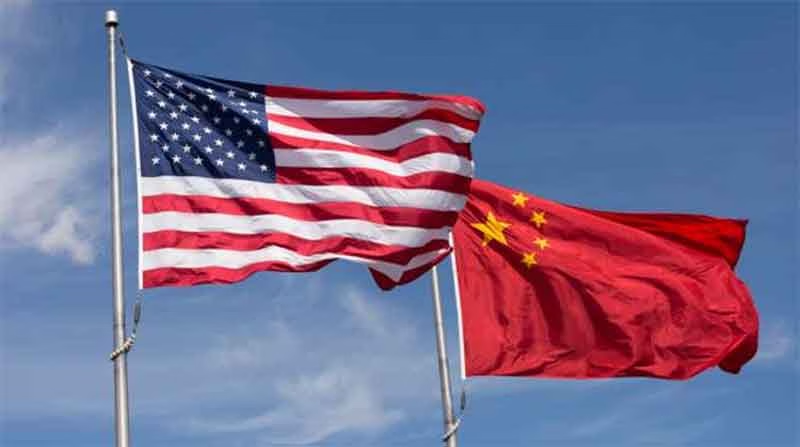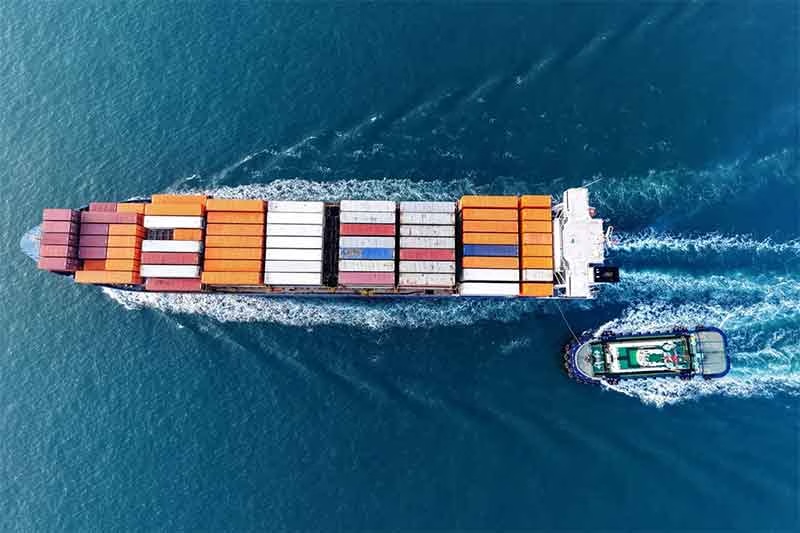
Trump’s attempt to pull USA out of the US laid post WWII economic order and instead take a path of isolationisn and economic protection, is perhaps the most systematic assault on Truemanism. Even though the policy shift is being carried out as a public spectacle, understanding it’s causes and the objectives is not easy. Attempts to analyze this is confounded by the opacity surrounding this policy shift. It is still unclear whether Trump’s tariff policy are caused by his desire to impose tit for tat tariffs on countries with high tariffs on US products, or are they a result of US trade deficit.
Notwithstanding statements by Trump and his team on the reciprocal nature of the formula used by the White House, to decide upon the quantum of tariffs to be imposed on individual countries, did not even take into account the levels of tariffs imposed by other countries. White House simply took America’s trade deficit in goods with each country and then divided it by the amount of goods imported into the US from that country.
That the country-wise rate of tariff was calculated to redress American trade deficit is underscored in the case of Vietnam. When USA imposed 46% tariff, Hanoi immediately offered to drop all tariffs on US imports. However, Trump’s trade advisor Peter Navarro responded that Vietnamese offer was not adequate. Navarro was clearly not interested in the idea of reciprocity.
Similarly, there seems to be little clarity on what Trump seeks to achieve There is precious little coherence to the pronouncements Trump makes. For instance there are times when he claims that the tariffs will be paid by foreign governments, not American consumers. Ergo, the tariffs are intended to redress trade deficits without inflating prices in US domestic markets. At other occasions he suggests that the tariffs are imposed to shift industries back to the USA.
Evidently, trade deficit and industrial production are governed by different macroeconomic factors. Trade deficit is caused by an imbalance in savings and investment, plus the difference in government spending and tax revenue. Yet, Trump is committed to tax cuts that will further exacerbate the fiscal imbalance.
Outsourcing of manufacturing from the USA is the outcome of the post WWII western capitalism that has created inequality, wage contraction among the low-skilled (and increased wage growth at the top end) and ever greater precarity of employment that prioritised the interests of capital over labour. Outsourcing manufacturing jobs from USA is a result of privileging consumer prices over jobs and subjecting low-income workers to ever greater competition with workers elsewhere. Yet Trump’s policy on immigration is denying America a pool of young, able bodied cheap labour.
Trump’s tariff policy neither addresses the fiscal imbalance in the US economy, nor does it address the root causes of outsourcing of manufacturing from USA to countries with a large pool of cheap labour. However, it is a potent weapon of trade war. Despite the sudden u-turns etc., Trump’s policy is intrinsically a policy of trade war.
Consider, how inspite of at least two pauses Trump has not suspended his tariff policy. A 10% levy on all imports continues. Numerous other tariffs, such as 25% tariff on tariffs on all car imports to America; 25% tariffs on steel and aluminium imports, including products made from these metals; and 25% tariffs on many imports from Mexico and Canada. remain in place and are not affected by the pause. Bloomberg Economics has calculated that the US’s average tariff on all its imports, even after the pause, will rise to 24%, which is the steepest increase in a century.
Trump is also leveraging American military dominance to extract trade and economic advantages. The case of Ukraine is too well known to be recounted. Japanese dailies have reported on 11 April 2025 that even as Washington and Tokyo are preparing forto tariff negotiations, Donald Trump criticized the 1960 security treaty with Japan as “one-sided,” rekindling Japanese fears he might use the talks to ask Tokyo to pay more for hosting American troops, buy more U.S.-made weapons and further boost defense spending.
Trade war has been unleashed by Trump to retain American economic dominance and the hegemony of the US Dollar. Trump warned off BRICS member countries from replacing the U.S. dollar as a reserve currency by threatening to impose 100%-tariffs weeks after winning the November presidential elections. On the so called ‘Liberation Day’, 2 April 2025, a stablecoin bill called the STABLE Act advanced through the House Financial Services Committee with bipartisan support. Thus increasing the likelihood that Congress will pass a law this year cementing stablecoins’ as a global financial tool. Proponents argue that stablecoins will help the U.S. preserve the global centrality of the dollar.
Trump views China as a threat to his desire of re-asserting American economic dominance and the hegemony of the US Dollar. Notwithstanding the economic choke points in Chinese economy it has either equalled or surpassed the USA in many critical economic metrics. The attempt to choke Chinese economy through tariffs, trade restrictions etc., all seek to weaken China economically. Indeed, the exceptionally high tariff imposed Vietnam has the stated objective of forcing it to increase vigilance against export of Chinese products to USA through Vietnam.
Chinese economy is beset with choke points, with the slowing down of demographic growth it has lost the demographic dividend over West. Since covid Chinese economy has slowed down and there has been youth unemployment, and deepening stagnation. But so is the American economy. Besides Chinese economy has the heft. Although still catching up in fields such as biotechnology and aviation, China produced almost half the world’s chemicals, half the world’s ships, more than two-thirds of electric vehicles, more than three-quarters of electric batteries, 80 percent of consumer drones, and 90 percent of solar panels and critical refined rare-earth minerals. China was responsible for half of all industrial robot installations worldwide and it is a decade ahead of anyone else in commercializing fourth-generation nuclear technology.
However, the greatest strategic advantage that China has over USA is that that it has better economic alliance in the BRICS nations, West Asia, Africa and Latin America. It’s trade with ASEAN, in 2023,. reached reached 702 billion USD, accounting for 19.7% of ASEAN’s total trade. China is the largest trading partner for most member states. RCEP. And since the declaration of trade war by Trump China, South Korea, andJapan agree to promote regional trade. USA on the other hand is following a policy of isolation and intimidation.
Subscribe to Our Newsletter
Get the latest CounterCurrents updates delivered straight to your inbox.
China, thus, has better economic cushions than USA to absorb the pressure of the trade war. It’s real strength over USA lies in its multilateral trade and economic alliances…plus it’s economic heft. Perhaps multilateralism and capacity building are the best way to overcome Trumpian unilateralism.
Kumar Sanjay Singh is Associate Professor, Department of History, Swami Shraddhanand College, Delhi University














































